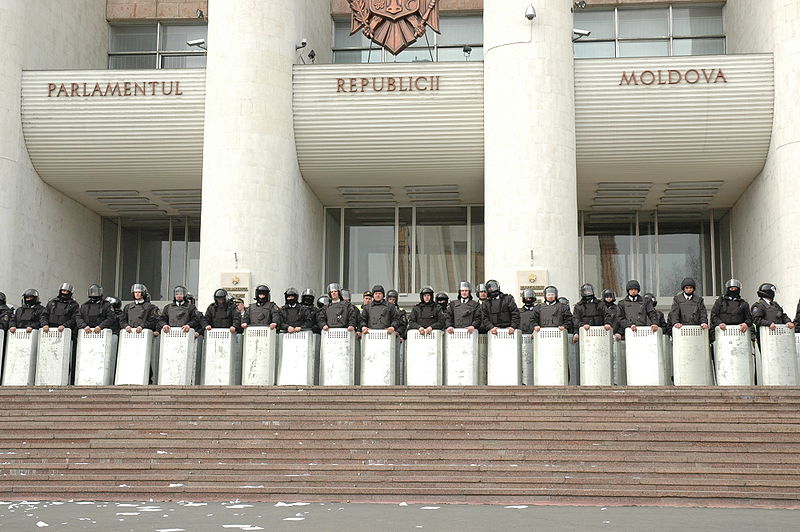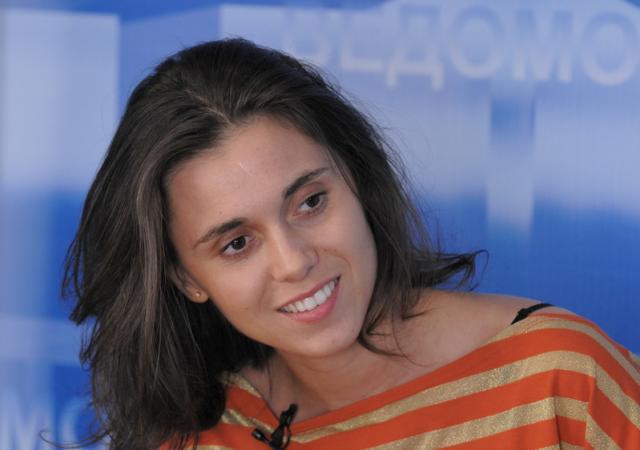I don’t usually crosspost, so if you’ve seen this post (which also a couple of interesting comments now) on the Media140 blog there’ll be nothing new below, but I hope you’ll forgive me for doing so on this occasion.
The intro in italics was written by Dee Jackson, the Editor of the Media140 blog. I’m grateful to her for inviting me to post on the blog and her editing skills (a rare luxury!)
The rest is me picking up where I left off for the Frontline Club in April here and here.
The Iranian Elections in June saw Twitter jump into public consciousness as the government jammed mobile phones and blocked access to many other social networks. Twitter users changed their locations en masse to “Tehran” to protect those really tweeting from the Iranian capital while avatars acquired green ribbons and washes, in yet another sign of solidarity.
However, you might have well have missed the very first “Twitter Revolution” – which took place a couple of months earlier in April, in Moldova. Or did it? Below Daniel Bennett reflects on whether or not students really used Twitter to storm the Moldovan presidency or whether the picture, now distinctly clearer in retrospect, is rather more complex than the headline writers might have wanted it to be.
Background
In April, Natalia Morari, investigative journalist and civil rights activist, sat down with a handful of friends in a cafe in Moldova. They had met to discuss the re-election of the ruling Communist Party and more specifically what should be done about it. Natalia Morari and her friends were convinced the election was fraudulent and believed another four years of Communist rule would be a disaster for Moldova. They decided to organise a peaceful protest: a candle-lit vigil of national mourning in the capital Chisinau.
Denied access to the Communist-controlled media, they spread the word using a variety of social media tools. Expecting several hundred to attend their ad hoc protest they were more than a little surprised to find that thousands had turned up to demonstrate their anger at fraud and government policy. Perhaps even more astonishingly the media world was watching because Moldova’s Twitterati had managed to get #pman (the acronym of the main square in the Moldovan capital Chisinau) to trend on Twitter.
‘Twitter Revolution’?
After all, it was a great story and media organisations around the globe gobbled it up – Twitter used to organise mass demonstration and bring down Communist government. My favourite headline from the time was the Telegraph’s, ‘Students use Twitter to storm presidency in Moldova’, which sounded rather surreal to me.
It was clear that Twitter was having a massive impact on the media coverage of this event – far more than it would have received otherwise – and that in terms of disseminating information to a much wider audience, Twitter was proving its worth. But personally, I wasn’t convinced that Twitter was playing a ‘key role in organising the protests’ as much media coverage reported at the time.
So, I took something of a gamble and went against the general Internet torrent, to suggest that Twitter was playing a far less significant role than was being suggested – at least in terms of prior organisation and at the scene of the demonstration.
I pointed out that cell phone networks were blocked at the square itself, website connections were down and that the total number of Twitterers in Moldova was probably no more than a few hundred. Perhaps most compellingly, I found a blog post by Natalia Morari in which she described the organisation of the protest – without even mentioning Twitter by name. Moldovan commenters both agreed and disagreed with my analysis. It seems that Twitter was used by some, but that this was a much broader social media campaign.
Political change in Moldova
 That was April. Fast forward to July and you might well have missed the news about the re-run of Moldova’s elections in which the Communist majority was overturned. In September, a new pro-western coalition government was formed and Parliament approved Vlad Filat as Prime Minister.
That was April. Fast forward to July and you might well have missed the news about the re-run of Moldova’s elections in which the Communist majority was overturned. In September, a new pro-western coalition government was formed and Parliament approved Vlad Filat as Prime Minister.
Don’t kick yourself for missing the updated headlines. After all, ‘people using cool Internet tool to storm the presidency’ is far more newsworthy than any eventual, wrangled, drawn out, and almost-complete triumph of a pro-western political movement in a small Communist state.
But we can now at least say that here was significant political change in one country – you might even call it a revolution. In the light of these events and the use of Twitter in Iran in June, it’s perhaps more important to re-assess Twitter’s role in the initial protest.
Natalia Morari on Twitter in Moldova
Last week, Natalia Morari spoke on a panel about Twitter’s role in the April protests at an Alliance of Youth Movements summit in Mexico City. She has been quoted in media outlets in the past, but the panel offered her an extended opportunity to discuss the role of Twitter (although it’s worth mentioning at this juncture that Natalia was sitting next to Twitter creator, Jack Dorsey.)
Morari gave us a better idea of how Twitter was used. She made it plain that “Twitter wasn’t used as a main source of mobilising people”. During the initial organisation of the protests, far more emphasis was placed
on blogs, text messages, Facebook and other social networks. Morari describes these spaces as “the most important free zone for people who want to make their own views [heard]” in Moldova, given that the Communist Party controlled the mainstream media.
 But once the demonstration started, she said Twitter became more important because the government shut down websites. She said the only source of information available was through Twitter on mobile phones. Even that was limited. Morari said at times only one mobile phone network was available and “many people couldn’t keep in touch with those who were in the street”.
But once the demonstration started, she said Twitter became more important because the government shut down websites. She said the only source of information available was through Twitter on mobile phones. Even that was limited. Morari said at times only one mobile phone network was available and “many people couldn’t keep in touch with those who were in the street”.
While Twitter was not the main mobilisation tool, Morari says more and more people began using it as the only way to keep up with what was happening in their country. In particular, she noted that it was vital for informing the significant Moldavian diaspora about what was happening.
In Morari’s words, Twitter was used as a way of “informing and keeping in touch with people who were interested and cared about what was happening in Moldova”. #pman then was more important as a way of organising information than it was for organising the protest (which, in retrospect, clearly wasn’t very ‘organised’ at all).
Evaluating Twitter’s role
The names we give to events never tell the full story. But in April the ‘Twitter Revolution’ tag meant that many people misunderstood what was happening in Moldova. It misses the key roles which other social media tools played in the initial mobilisation and, perhaps more importantly, the phrase disconnected the narrative from political reality.
Sitting next to Morari on the panel in Mexico City, Jack Dorsey said (I believe, misleadingly) that the events in Moldova proved the “concept of creating a temporary flash movement out of nothing” – as if general political dissatisfaction with Communist rule and the election process among Moldova’s younger, urban population were both irrelevant to the demonstration.
Nevertheless, the power of the few to disseminate information to the many – in the context of a country with state-controlled media and in the face of government attempts to silence opposition – had profound implications. Twitter’s ability to continue to provide people with access to information in these circumstances was a vital component in the process of the protests.
And while it might be a far more complicated picture, calling what happened in Moldova “a Twitter Revolution” certainly got us talking. Personally, I believe we need more debate, we need to be examining this sort of research and furnishing some comparisons with the Iranian election in June in order to understand what impact Twitter has on 21st Century politics.
